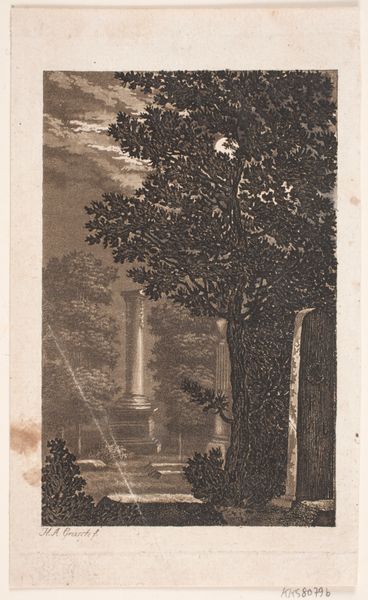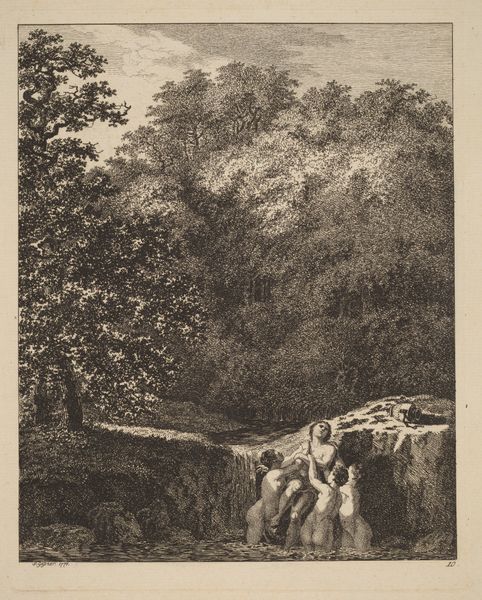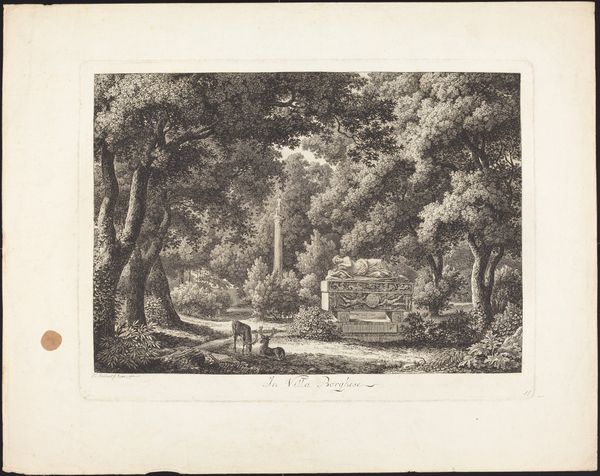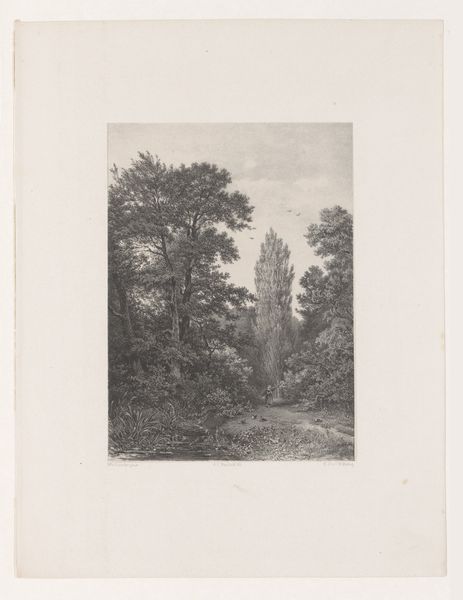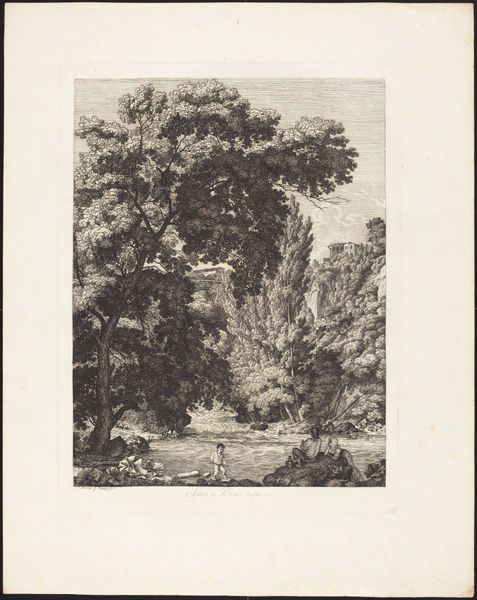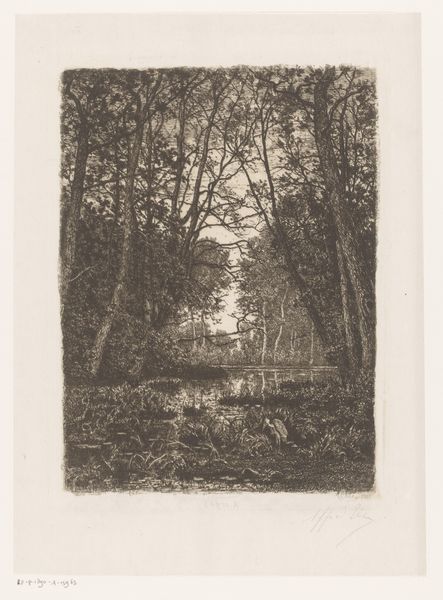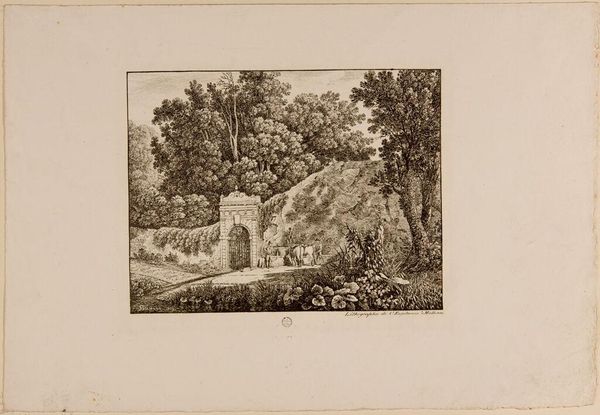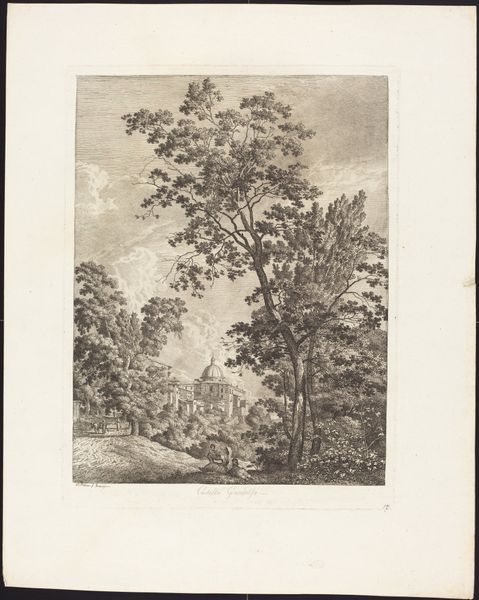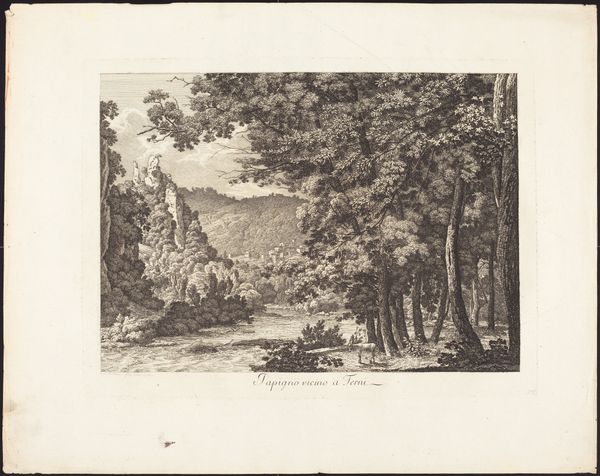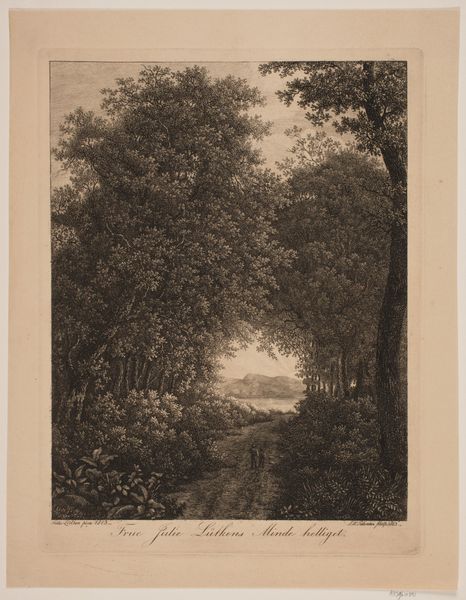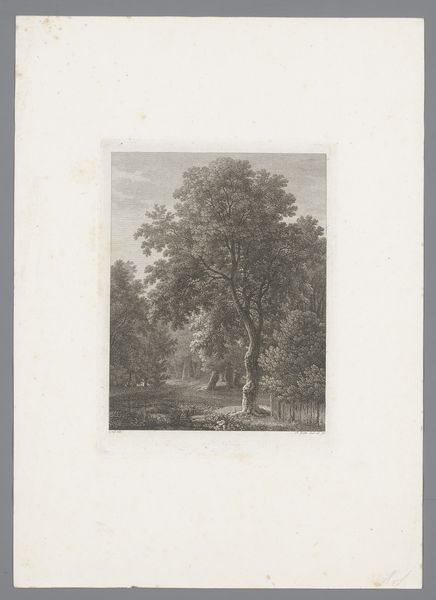
Fra Assistens Kirkegaard, (iflg. gml. auk.kat.) park med søjle i måneskin 1797
0:00
0:00
aquatint, drawing, print, engraving
#
aquatint
#
drawing
# print
#
landscape
#
romanticism
#
engraving
Dimensions: 156 mm (height) x 95 mm (width) (bladmaal), 119 mm (height) x 77 mm (width) (billedmaal)
Curator: Here we have Heinrich Grosch’s, “Fra Assistens Kirkegaard, (iflg. gml. auk.kat.) park med søjle i måneskin,” a landscape print dating to 1797. Editor: The contrast immediately strikes me; it's heavy on shadow, but that lone column is bathed in moonlight. There's a real sense of quiet melancholy, almost gothic, despite being a park scene. Curator: The work exemplifies Romanticism through its focus on mood and the sublime qualities of nature. Consider the stark textural differences carefully achieved here through aquatint and engraving techniques—the densely layered foliage of the trees contrasted with the smooth, illuminated surfaces of the neoclassical column. Editor: Grosch’s chosen scene and medium subtly evoke societal changes during the late 18th century. Graveyards shifted from church grounds into democratic parks where all, regardless of class, could access memorials, but that column also represents enduring elite power. The engraving process, laborious and painstaking, mirrors the entrenchment of social structures. Curator: Absolutely, but structurally the composition is also key. Observe how the placement of the tree on the right-hand side, its darkness nearly consuming that side of the composition, guides the viewer's eye through to the lighter, hopeful, architectural element. Editor: The stark juxtaposition creates a poignant dialogue—are we mourning the decline of the old order, or celebrating its transformation into something accessible? That duality feels unresolved. Are we meant to find solace in this scene or acknowledge the disquieting shadows that pervade? Curator: The unresolved feeling underscores Romanticism’s fascination with the human experience when encountering the awesome power of nature, which I also see in how light functions here. It isn't entirely illuminating but reveals the scene in fragments. Editor: This piece sparks a contemporary dialogue concerning remembrance and shifting societal paradigms. It is a potent meditation on the legacies we inherit. Curator: Ultimately, Grosch provides us with an exploration of pictorial space, skillfully divided by tonal contrasts. Editor: And perhaps also an interrogation of collective memory embedded within public spaces.
Comments
No comments
Be the first to comment and join the conversation on the ultimate creative platform.
